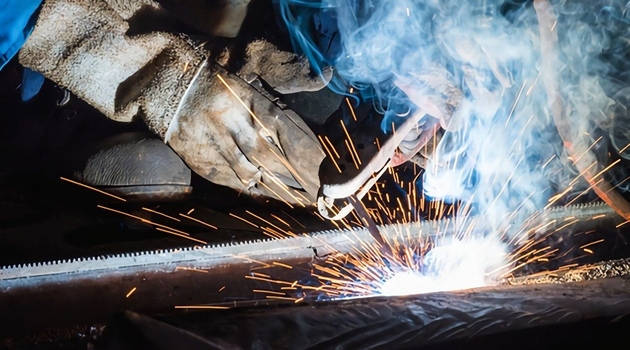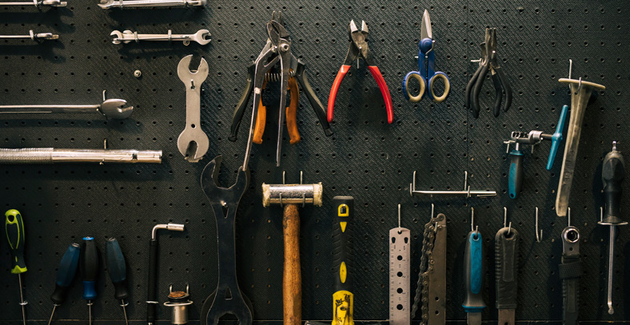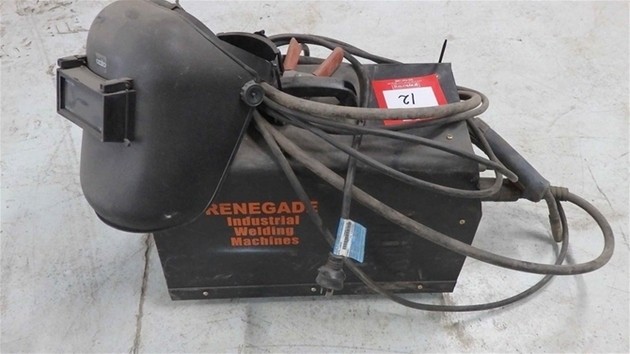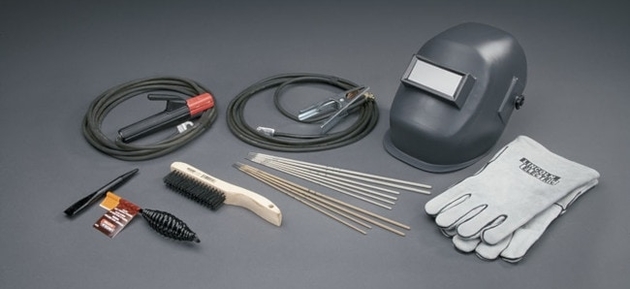Discover the Gear You Need to Start Welding
Thinking of a career change? How about welding? There are thousands of job listings for qualified welders in dozens of different industries across Australia. And the money is good, too. To get started into welding and hone your skills, you’ll need the tools for the job. Welding gear is accessible for most of us, and a little passion for building stuff from scratch definitely helps.
Welding and Welding Types

Welding is the intricate process where two pieces of metal, made of the same or different materials, are fused together. This is a simplified take on things, and there are different ways in joining metals. Which leads us to different types of welding and welding tools. Basically, there are four main types of welding widely used today. There are a lot of acronyms, so get ready.
MIG or Metal Inert Gas welding, also called GMAW or Gas Metal Arc Welding uses thin wires as filler materials between the workpieces. The ‘G’ in the name is an inert gas that shields the metals from contamination while being heated. MIG welding is a popular form used for thin sheet metals, so you’ll find it in the automotive industry as well as construction.
Next up is TIG or Tungsten Inert Gas welding. This is good for joining non-ferrous metals like aluminium, copper, and lead, and sought after in areas like bike makers to aircraft building and maintenance. TIG welding is a little different in that it uses a non-consumable electrode (doesn’t melt when heat is applied) and an inert gas, usually argon or helium acting as a protective layer. TIG welding is a bit harder to get right, but often produces some of the toughest welds.
Shielded Metal Arc Welding, or commonly called Stick Welding, is one of the more widespread welding types. The ‘stick’ is the flux-core electrode used to fuse the metals. Stick welding is a cheaper option, needs the least welding tools, and is a steppingstone for more difficult welding types.
Lastly, there is Flux-Core Arc Welding, and if you like acronyms – FCAW. This keeps the weld clean by using a flux, and since there’s no need for an inert gas, it can used in many places where MIG or TIG welding poses a safety risk. FCAW is often used in construction, shipbuilding, in underwater applications or in exposed areas.
Welding Equipment to Get Started

Now, let’s get familiar with the crucial welding tools and equipment. All types of welding listed above work by creating a heat source, and this is supplied by a welding machine.
Welding Machine and Attachments

A welding machine can be specific for a particular type of welding. A MIG welder, for instance, has wire constantly fed from the machine to the weld gun at the end to create an arc to heat the metals. TIG and stick welding machines instead rely on manually fed electrodes. So, if you’re only doing one type of welding, get the right welding machine. Alternatively, there are combo welding machines that can be used across the board, though these are more like a jack of all trades, and master of none.
The types of metals you work with will mean differences in welding machines. A MIG welding machine will be good for ferrous metals like steel, but for non-ferrous metals you’ll be looking at a TIG welder. This allows for better adjustment of amperage from the machine (by operating a foot pedal) to weld resistive metals, particularly aluminum. A TIG welder also uses AC current to avoid oxidization, and so is better when you want cleaner looking welds.
To do this it will have a built-in inverter, which ups the cost. Once you’ve sorted which type of welding you’ll mostly be doing, there are a few common things to look out for in welding machines. Higher amperage rating – or how much current the machine draws – is always better to get higher heat through the torch. Also look for higher duty cycles, or the consistency of the current draw over a period of time.
This lets you weld without having to think of heat levels. Next is the quality of the attachments. This includes hoses, the torch gun, as well as regulator valves and gauges for connecting gas cylinders. Most welders will also include an earth clamp to create a ground connection, and by doing so avoid accidental electrocution.
Electrodes
This is the filler material, or stick of metal. There are two types of electrodes – consumable like you’ll see in stick or MIG welding, and non-consumable in TIG welding. The purpose of electrodes is to conduct current into the weld pool and strengthen the electric arc, and for those with flux coatings to shield from contamination.
Electrodes come in different metals and can be bare or with a flux coating. They are numbered to help with the types of metals you are working with. These numbers also inform about the strength of the weld, whether it is suitable for TIG welding and DC and AC currents, and the position the electrode can be used.
Accessories and Other Gear
Welder benches are useful when welding larger metal pieces like disassembled car panels or pipe fittings, though won’t be necessary for most hands-on jobs and where space is limited. To get the workpiece assembled you can use a range of different clamps, like C-clamps, magnetic clamps and magnetic squares that will hold the two parts stable as you weld.
Earth clamps, as mentioned, are a much-needed safety feature and attached to the earth lead from the welding machine. Torch guns can be included with the welder or sold separately. There’s also a range of torch accessories like collets and nozzles to adjust the arc spread along the weld pool. This will help in getting cleaner welds. To get the heat going, gas cylinders come filled with pressurised gases for the type of welding you’re doing.
These come in different sizes, have fitted safety valves and gauges, and are usually placed on welding or gas-cylinder trolleys. Lastly, consider welding equipment for removing spatter once the weld cools. This includes files, metal brushes, chipping hammers, or when you need both speed and precision, an angle grinder.
Safety Gear

This a prerequisite in just about any job, and especially in welding. The chance of burns is very high, and the electric arc is blinding, so the appropriate protective gear is a must. Look for self-dimming welding helmets, gloves, jackets, welding pants and a decent pair of work boots. To avoid burns to the arms, also get a pair of welding sleeves.